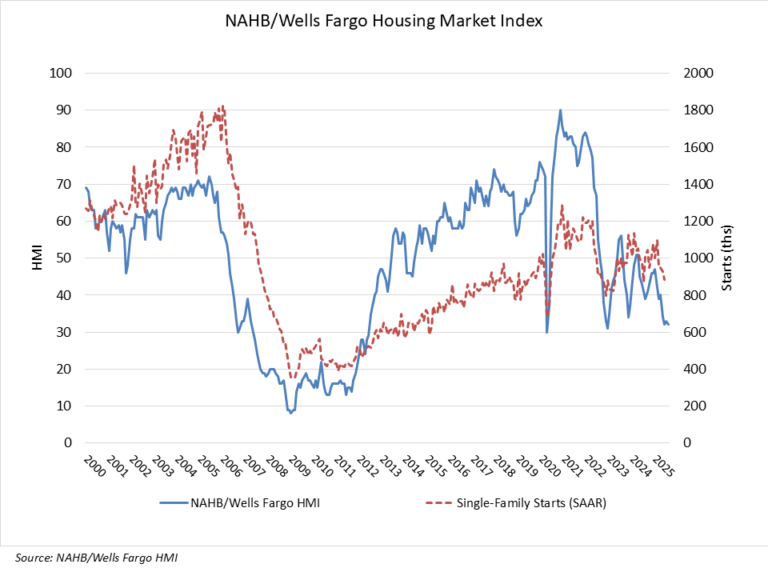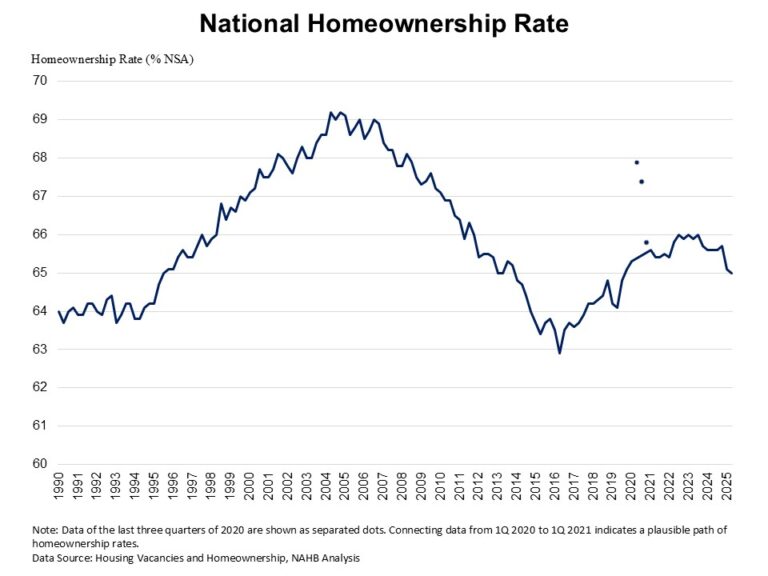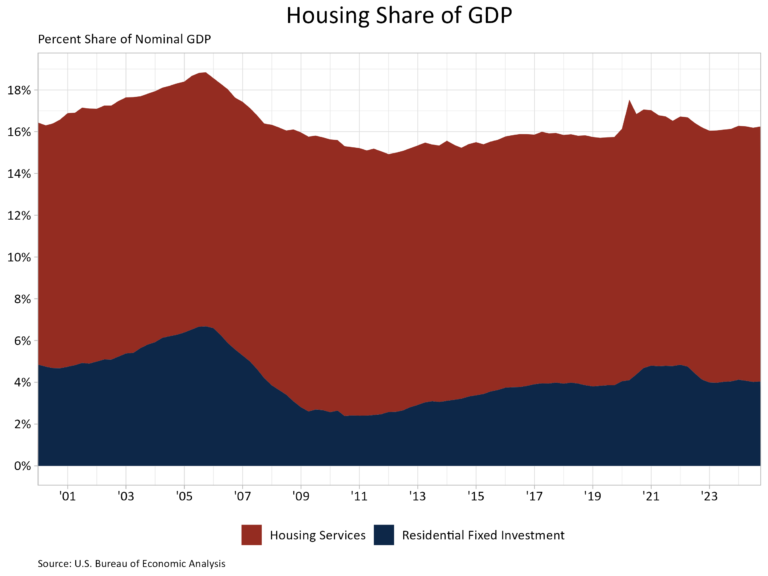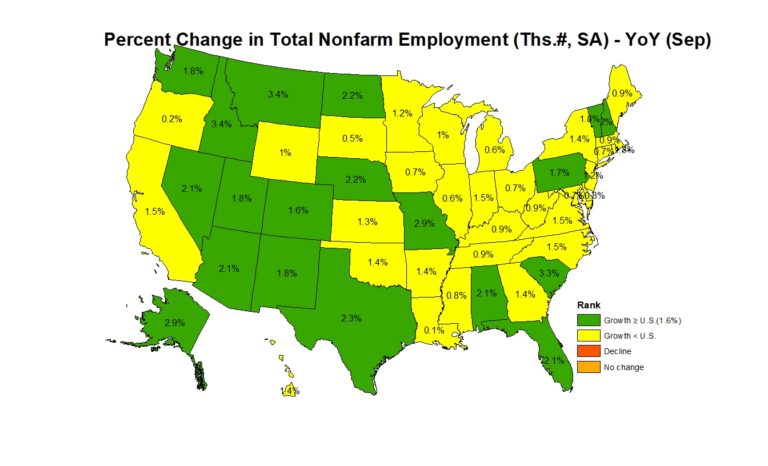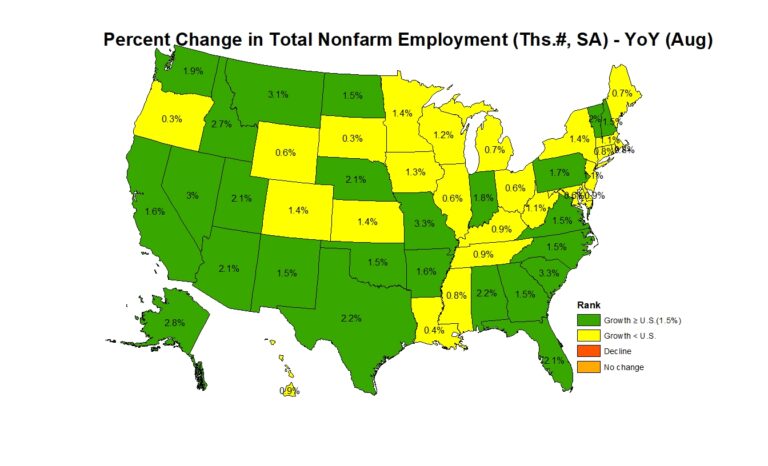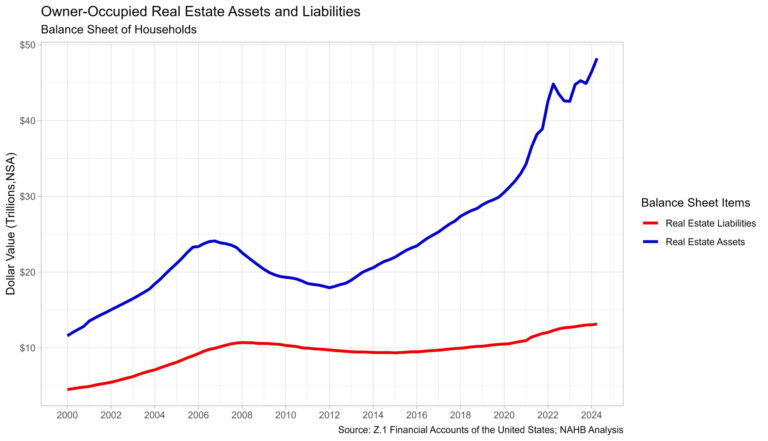Elevated mortgage rates, weak buyer traffic and ongoing supply-side challenges continued to act as a drag on builder confidence in August, as sentiment levels remain in a holding pattern at a low level.
Builder confidence in the market for newly built single-family homes was 32 in August, down one point from July, according to the National Association of Home Builders (NAHB)/Wells Fargo Housing Market Index (HMI). Builder sentiment has now been in negative territory for 16 consecutive months and has hovered at a relatively low reading between 32 and 34 since May.
Housing affordability is central to the outlook for economic growth and inflation. Given a slowing housing market and other recent economic data, the Fed’s monetary policy committee should return to lowering the federal funds rate, which will reduce financing costs for housing construction and indirectly help mortgage interest rates.
In further signs of a soft housing market, the latest HMI survey also revealed that 37% of builders reported cutting prices in August down from 38% in July. This share has remained at 37% or 38% for the past three months. Meanwhile, the average price reduction was 5% in August, the same as it’s been every month since last November. The use of sales incentives was 66% in August, up from 62% in July and the highest percentage in the post-Covid period.
Derived from a monthly survey that NAHB has been conducting for more than 40 years, the NAHB/Wells Fargo HMI gauges builder perceptions of current single-family home sales and sales expectations for the next six months as “good,” “fair” or “poor.” The survey also asks builders to rate traffic of prospective buyers as “high to very high,” “average” or “low to very low.” Scores for each component are then used to calculate a seasonally adjusted index where any number over 50 indicates that more builders view conditions as good than poor.
The HMI index gauging current sales conditions fell one point in August to a level of 35 while the component measuring sales expectations in the next six months held steady at 43. The gauge charting traffic of prospective buyers posted a two-point gain to 22 but remains at a very low level.
Looking at the three-month moving averages for regional HMI scores, the Northeast fell one point to 44, the Midwest gained one point to 42, the South dropped one point to 29 and the West declined one point to 24. The HMI tables can be found at nahb.org/hmi.
Discover more from Eye On Housing
Subscribe to get the latest posts sent to your email.
This article was originally published by a eyeonhousing.org . Read the Original article here. .
